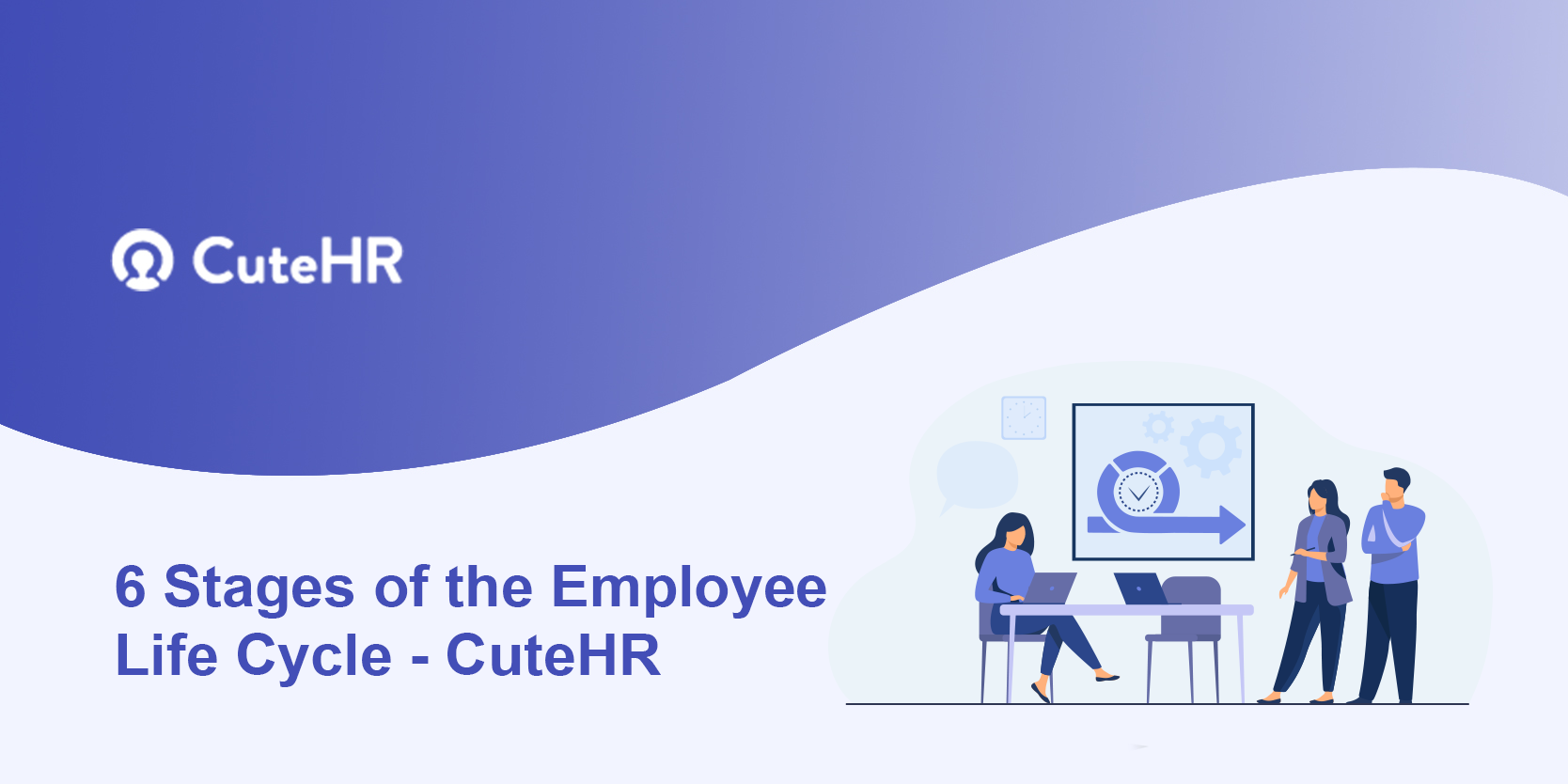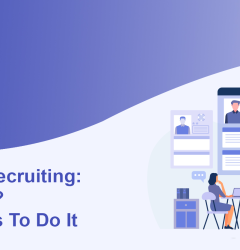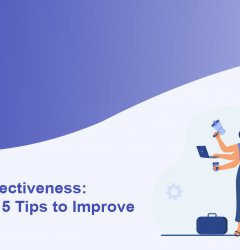06 May

Did you know? 59% of employees invest in their own upskilling, to a certain extent.
Creating an engaging employee experience is one of the most important aspects of having excellent organizational effectiveness. The employee life cycle depicts an employee’s level of involvement with the organization. Mapping their path inside your organization allows you to obtain a clear picture of what has to be improved and how you can position yourself better in industry circles.
The employee life cycle begins when a potential employee first learns about the organization and concludes when they leave. While some models focus on five or six life cycle stages, we’ll look at all stages of the employee life cycle in detail, with a particular emphasis on how to monitor and optimize the employee experience along the way. Continue reading to discover more about the employee life cycle and why it is important to your company.
Table of Contents
What is An Employee Life Cycle?
The employee life cycle (ELC) is an HR model that monitors an employee’s full career inside your firm. It starts the minute a potential employee becomes aware of your brand and continues until the day they leave your firm. Apart from recruitment and compliance management, the ELC considers recruiting and onboarding, retention, career development, and the whole employee experience during their journey with you.
You’ll be able to recruit and retain the appropriate candidates and increase your company’s overall performance once you grasp how to connect with your employees at every stage of the employee life cycle.
Why is the Employee Life Cycle Important?
The employee life cycle model is important for a variety of reasons. The most significant advantage is that it drives you to assess and enhance the employee experience at each point of the process.
And the better an employee’s experience with your organization, the more likely they are to stay with you. This increases retention and has a significant influence on turnover and associated expenses.
Once you’ve grasped the employee life cycle, you can concentrate on improving the experience at each stage of an employee’s journey with you. You may also create learning and development plans to help your staff to grow and reach their full potential.
All of the above also contributes to your employer’s reputation. As a result, you will be able to recruit top employees and establish a devoted and focused team.
Advantages of Employee Life Cycle
Your company will undoubtedly benefit from planning out the employee trip in the same way that you map out the customer journey: increased talent retention and enhanced reputation.
The ability to devote resources and efforts to mitigate turnover issues decreases the amount of time and money lost by turnover expenditures. A better reputation, on the other hand, increases the chances of attracting fresh talent, resulting in a more engaged and motivated staff.
- An effective Employee Life Cycle Strategy helps to synchronize your employees’ and your company’s success. Individuals that are engaged are excited about their jobs and assist other employees in adjusting to the change.
- Allows employers to regularly honor their employees and thank their peers, resulting in a higher level of engagement. With this method, an employee’s aspirations may be met while the business’s needs are met.
- Makes people think outside the box and generate fresh ideas, which may be beneficial to the company’s long-term growth and survival.
Stages of Employee Life Cycle
We’ll look at the seven stages of the employee life cycle and how you might optimize them in the sections that follow.
1. Attraction
The employee attraction stage is the first step of the employee life cycle. Regardless of how original and good your product or service is, your company will fail if excellent talent is not attracted and retained. As a result, the attraction stage is one of the most important components of any organization’s growth plan.
Depending on whether or not individuals are already familiar with your business, the attraction phase might take several forms. If this is the case, they will most likely have a preconceived notion about your organization and will seek further information to validate their perception.
This is where your Employer Brand enters the picture. What you say about your company as an employer may have a significant impact on how applicants view you.
It’s similar to how, after seeing a wonderful movie or a new Netflix series, you’ll recommend it to your friends and coworkers. The same is true for your job; if it’s a terrific place to work, you’ll tell everyone about it.
Later in this post, we’ll look at how you can transform unhappy leavers into happy leavers. Current workers’ feelings about working for your organization are largely determined by their employee experience.
To summarise the most crucial elements of interest from the attraction phase:
- Take into account your (former) workers’ experiences with you as an employer.
- Keep track of your Employer Branding efforts.
- ‘Walk the walk,’ they say.
2. Recruitment
The employee recruiting stage is the second stage of the employee life cycle, during which you seek for and attract the greatest individuals to join your firm. Recruitment might occur as a result of an existing post becoming vacant or the creation of a new position entirely. The greatest recruiting strategies provide an ideal applicant experience, encourage collaborative hiring based on defined criteria and processes, and give valuable data that can be utilized to enhance hiring outcomes over time.
Here are a few basic recommendations to include in your recruitment stage if you want to be successful in recruiting the ideal talent for your team:
Be precise about who you’re searching for and what you’re looking for
Publishing unclear job adverts is a sure-fire technique to decrease your chances of hiring the best candidates for a position. While being broad might help you cast a broader net, you should still be sure to explain all of the requirements to save you and the candidate time when applying and assessing.
Explore using multiple recruitment platforms
Using only one major recruitment website or media outlet substantially restricts your prospect pool. Consider where your ideal prospects spend the majority of their time. This might be a networking event in the sector or a lesser-known but growing industry journal to which many new prospective industry leaders subscribe.
Engage your staff
You may encourage your current employees to assist decide the ideal requirements for the post, in addition to encouraging them to suggest possible candidates. If you believe it is suitable, your team members can even assist you in analyzing the applications and credentials of possible individuals. Another effective strategy to include your workers is to suggest that someone in a very similar function participate in the interview process to evaluate the applicants who best fit inside the team.
Ask your current team for references
A reference from one of your workers is one of the most effective recruitment methods available. As active members of the business, they are likely to know numerous people who would be a good fit for the position you are looking to fill. However, avoid hiring close friends or relatives of existing team members, since this might complicate the situation. Typically, these referrals will have a similar set of values.
3. Onboarding
After an employee is hired, the HR staff must ensure that the onboarding process is as easy as possible. It should be obvious to the new employee when their first day will be, what to anticipate from their first day and week, what sort of training will be provided, the expectations of their position, and what documentation must be completed before beginning work.
During the onboarding step, new workers learn more about their job and identify the attitudes, knowledge, skills, and behaviors necessary to perform effectively inside the business.
Making new workers feel welcome and well-acquainted with the nature of their position and the company is crucial to eliciting long-term contributions and commitment. Here are some essential methods you can use to guarantee that the onboarding portion of your company’s employee life cycle goes as smoothly as possible for everyone involved:
Clearly state your expectations
The job description will provide some of the details, but it is still necessary to walk each recruit through the expectations you have for them, as well as explain why they are crucial to the company’s success.
Follow-up on a regular basis
Completing the first week of induction and then leaving the new worker to fend for themselves will almost always result in a quick fall in employee performance. After a few weeks, schedule face-to-face meetings with each new employee to check in on how they are doing, any issues they may have had integrating with the team, and so on.
Review the values and vision of the organization
Laying out your company’s principles and objectives, as well as defining what they all represent, is an essential part of any onboarding process. Clarify any questions they may have and gain an understanding of what the values mean to them, ensuring their perspective is aligned with success.
4. Development
Learning and development may be a terrific approach to strengthen your business skills in addition to keeping your workers – and improving your employee life cycle. However, because this essay is about the former, we’ll concentrate on the employee side of L&D here.
The outcomes of three assessments (and, of course, the funding you have available) will determine how you arrange your L&D activities:
- Analyze the organization: Based on your organization’s long and short-term objectives, you will be able to identify the training requirements that will assist the firm in meeting these business objectives.
- Analyze yourself: Current competencies and knowledge, as well as performance and skill levels, are identified here. The employee’s performance review is frequently the most relevant source for this study.
- Analyze the function, duties, or competencies: The objective here is to determine the most critical information, abilities, and attitudes for people to be successful in their employment, as well as which of these are the most easily learned.
These three evaluations, when combined, provide input for defining your workers’ training and development requirements. The actual training can take place in a variety of formats, including online or offline, with or without fellow students, in bite-sized chunks, and so on.
During the recruitment process, it is an excellent time to question employees about their learning and development expectations. You’ll be able to tell straight away if you’ll be able to satisfy those L&D expectations.
Bring it up again throughout the onboarding process to ensure that both the recruit and the management are on the same page in terms of what they anticipate. Then, a good opportunity to discuss staff growth is during performance evaluations, or, really, at any moment in between.
The following are key insights from the development phase of the employee life cycle:
- During the recruitment process, find out what someone’s L&D expectations are.
- Check-in with your workers regularly to get an update on their L&D desires.
5. Retention
Employee retention is the fifth stage in the employee lifecycle model. It is here that you should concentrate your efforts on retaining your best personnel and ensuring that they are pleased and challenged in their responsibilities within the team.
In this stage, the impact of business culture is significant. If your organization’s culture is weak, it will result in a high personnel turnover rate, which means you will have to deal with replacement expenditures frequently. Improving the retention stage is an excellent strategy to mitigate this risk while also promoting longevity and happiness in your team’s career pathways.
Some suggestions for keeping important personnel and strengthening the employee retention stage of your employee lifecycle model include:
Communicate your organization’s mission and team goals openly
To increase employee retention, you must first ensure that your staff fully understands and is dedicated to the same vision and direction as the firm. You should communicate with them frequently about where they fit in the firm and how their tasks and successes assist the corporation to carry out its objective.
Recognize what inspires your staff
Because no two employees are identical, no single thing will drive every single employee to work hard. Understanding what drives and inspires different team members allows you to engage and, hopefully, retain your staff.
Recruit the proper individuals
You must first attract and recruit great talent to keep top talent. This is where the effectiveness of your attraction and retention phases can be judged – if you were meticulous in your hiring process and approach in the first place, you will have a greater chance of retaining the proper workers on your team.
6. Separation
The employee separation stage is the final stage of the employee life cycle. Most employees’ job lifecycles will come to an end at some time, whether due to retirement, new employment, or personal reasons.
It is vital to treat the separation process with the same seriousness as the onboarding process and to be equally deliberate in how you handle this stage. When a team member departs, it has an impact on the remaining members.
It is the manager’s and the company’s HR specialists’ job to ensure that the employee who is departing does so in a way that does not create considerable disruption.
If you find yourself in a scenario where a key person abruptly leaves your firm, there are a few essential techniques you may utilize to mitigate the impact of that disruption:
Request honest feedback
When someone quits a firm, perform an exit interview since it is one of the best ways to get honest feedback on what it’s like to work there.
Encourage the team to remain focused on the future
The loss of a valued employee can frequently lead to a drop in overall team morale. Focus on affirming commitment to the remaining team members, reminding them that, while their leaving is upsetting, the team will eventually heal and flourish as a consequence of it.
Maintain an optimistic attitude
You will feel sad when a strong performer leaves your team, but it does not imply you will never find another exceptional employee to replace them.
Recognize the reasons behind the resignation
What an employee claims to be the reason for their departure and what the actual reasons are are frequently at odds. Attempt to delve deeply into what genuinely caused the split so that you can avoid the situations that lead to it in the future.
How to Analyze and Enhance the Employee Life Cycle Journey?
Once you’ve identified areas for development, it’s time to look for solutions to assist you in better supporting your employees. Superbeings is one such fantastic solution for controlling and enhancing procedures at every stage of the employee life cycle.
With reporting tools and sophisticated dashboards to help you attract, pay, and grow your employees, you can analyze workforce KPIs and record your performance as you progress.
Instead of managing workforce operations across many platforms, you can manage each stage of the employee lifecycle with a single all-in-one application. The Importance of Job Lifecycle Management
Employee Life cycle Management is one of the most effective methods to visualize and plan for each step of employee interactions with your company, providing you with the data you require to ensure that each stage is successful. If your objective is to recruit and keep a fantastic team, you must do your best to offer it to everyone.
Wrapping It Up
The employee life cycle model is one of the finest ways to envision and prepare for each step of an employee’s interactions with your firm, giving you the information you need to make each stage of their stay with your company as successful as possible. You are far more likely to recruit and keep a wonderful staff if you focus on doing your best at each step.
Frequently Asked Questions (FAQs)
What are the main phases of an employee life cycle?
The many phases of the employee life cycle can be classified into the following phases:
- Pre-hiring phase
- Training phase
- Post-hiring phase
What are some suggestions for an effective employee life cycle?
Here are some ideas for an effective employee life cycle:
- To track progress, take measurements at each step.
- Be careful in your utilization of data.
- Maintain honesty.
- Structure the steps to meet your requirements.












Himani